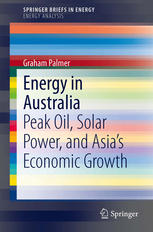

Most ebook files are in PDF format, so you can easily read them using various software such as Foxit Reader or directly on the Google Chrome browser.
Some ebook files are released by publishers in other formats such as .awz, .mobi, .epub, .fb2, etc. You may need to install specific software to read these formats on mobile/PC, such as Calibre.
Please read the tutorial at this link: https://ebookbell.com/faq
We offer FREE conversion to the popular formats you request; however, this may take some time. Therefore, right after payment, please email us, and we will try to provide the service as quickly as possible.
For some exceptional file formats or broken links (if any), please refrain from opening any disputes. Instead, email us first, and we will try to assist within a maximum of 6 hours.
EbookBell Team

5.0
38 reviewsWith rapidly declining costs and seemingly unlimited sunshine, the choice of solar in Australia seems obvious. Yet despite its many advantages, homes with solar remain completely dependent on the electricity grid for reliable supply, which in Australia implies mostly coal-fired generation. Indeed, even countries that have invested heavily in solar, such as Spain and Germany, have been unable to deflect the trajectory of fossil fuel dependence.
The reasons for this apparent paradox are varied, and this book provides a deeper and more nuanced understanding of the practical applications of photovoltaics (PV) in modern electricity systems. While the conventional life-cycle assessment (LCA) boundaries as prescribed by the IEA-PVPS provide a consistent methodology for comparing evolving PV technologies, the narrow boundaries exclude many critical downstream energy costs. Similarly, simple cost comparisons of PV versus conventional power sources overlook the significant economic and energy costs of intermittency and grid integration. Yet distributed storage, which could provide potentially valuable network support, is frequently given a low priority by advocates of solar.
Treating PV as an extension of, rather than as a substitute for, the fossil fuel enterprise enables a more productive discussion of PV’s potential role in electricity generation. The sunburnt country of Australia, which has a modern electricity system, is an ideal case study for exploring the potential of solar PV. With a focus on rooftop solar, energy storage, grid integration, and electricity system issues, Energy in Australia offers valuable insights into the practical challenges of solar power. Although many national economies are already confronting a downward trend in energy return on investment (EROI) of oil and gas from both conventional and unconventional sources, the large-scale deployment of low-emission energy sources that lie below a critical minimum EROI threshold may ultimately prove counter-productive.